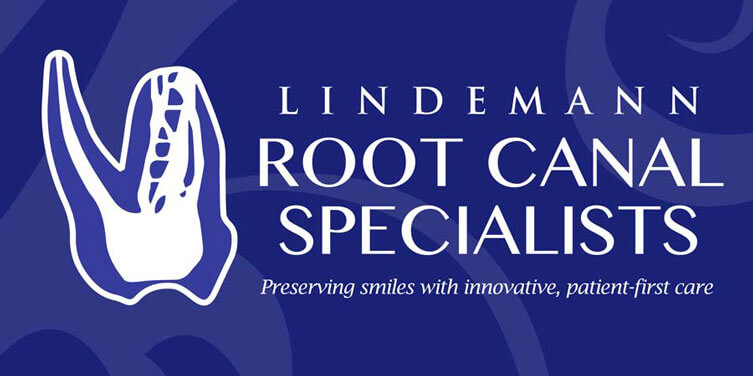Endodontic Retreatment in Flint, MI
Lindemann Root Canal Specialists provides endodontic retreatment services in Flint, MI. Call 810-732-7900 to learn more and schedule your appointment.
Most root canals are successful, saving compromised teeth. In a small number of cases, a re-infection of the root canal system can occur. This may happen months or even years later. When this happens, endodontic retreatment is needed.
Endodontic retreatment is essentially a second root canal. Instead of simply extracting the infected tooth, retreatment gives you another chance to save it.
What Happens During Endodontic Retreatment
The root canal system is accessed, the previous root canal filling material is removed, the entire root canal system is cleaned, and new root canal filling material is placed.
If you are having problems with your existing root canal, it’s important to see an endodontist for retreatment. We have advanced training in performing root canals; because it’s our specialty, you can feel confident knowing you’re getting the best possible care from a root canal expert.
Frequently Asked Questions About Endodontic Retreatment
Is retreatment of a root canal painful?
Your tooth and the tissue surrounding it will be numbed with local anesthetic injections to ensure that you’re comfortable throughout your procedure. You may have some tenderness and discomfort afterwards as the anesthetic wears off, but this is usually minimal and can be managed with over the counter pain medication.
How long does a retreatment root canal take?
The length of your endodontic retreatment procedure depends on the complexity of your canals, but it usually requires a 60 minute appointment.
Can antibiotics heal an infected root canal?
Many patients wonder if they can take antibiotics to heal the infection in their tooth instead of getting a second root canal. Unfortunately, root canal infections do not resolve by taking prescription antibiotics alone. The only solutions are endodontic retreatment or extraction.
Is root canal retreatment successful?
Yes, statistically, root canal retreatment has a 95% success rate with patients needing no further endodontic treatment.
What is Root Canal Retreatment?
Root canal retreatment is a procedure to fix a tooth that has previously received root canal treatment. During a root canal, the pulp inside the tooth is removed, and the tooth is cleaned out thoroughly to remove bacteria. The canals are filled with a rubbery material called gutta-percha. A restoration is then needed to fully restore the tooth.
Sometimes, however, even after treatment, the affected tooth continues to be painful or infected. There are several possible causes:
- Untreated canals: When teeth have more than one root (especially molars), there may be canals that weren’t seen or treated during the initial procedure.
- Fractured or curved canals: Some canals are very small and difficult to see on an X-ray. Also, if your tooth was injured before you received treatment, it might be difficult for the treating dentist to detect cracks in the roots.
- Cracks in the crown or at the base of the tooth: Cracks in these areas may allow bacteria to leak into the tooth and cause reinfection.
Why would I need Root Canal Retreatment?
You may need root canal retreatment when the initial root canal procedure doesn’t eliminate the infection. The success rate for endodontic treatment is high. Even if the initial procedure was unsuccessful, retreatment can usually save the tooth.
In some cases, the initial procedure may have been technically challenging due to complex canal anatomy or calcification.
Other reasons for retreatment include:
- The canals were not adequately filled with gutta-percha, the material used to seal the inside of the tooth after treatment.
- The filling was not sealed properly.
- Bacteria remain in the canals.
- The tooth suffered trauma or damage before or after treatment.
- A restoration (filling or crown) was not placed on top of the tooth in time to protect it from biting forces, bacteria, and temperature changes.
- There was decay under an existing restoration (filling or crown), which allowed bacteria to enter the treated canal.
- A crack or fracture developed in the tooth after treatment that allowed bacteria to enter.
How Do I Know If I Need Root Canal Retreatment?
The following symptoms may indicate you need root canal retreatment:
- Severe pain when chewing.
- Pain that lasts more than a few days.
- Sensitivity to hot or cold foods and drinks that lasts more than a few seconds.
- Pain that occurs spontaneously, without any trauma or excessive chewing.
- A pimple-like bump on the gums.
- Tenderness or swelling in the lymph nodes due to infection spreading into the bone and tissue surrounding the tooth.
What Does Root Canal Retreatment Involve?
The procedure involves opening the access cavity and removing the filling materials placed during the initial root canal. If necessary, your endodontist can remove any posts that may have been placed to support a large filling or crown.
Once all of the infection has been removed, your endodontist will place new filling material into your tooth’s root canals and seal it with a temporary filling. You will then return to your general dentist for the appropriate final restoration (crown, filling) on the tooth.
Call 810-732-7900 to schedule your appointment.
